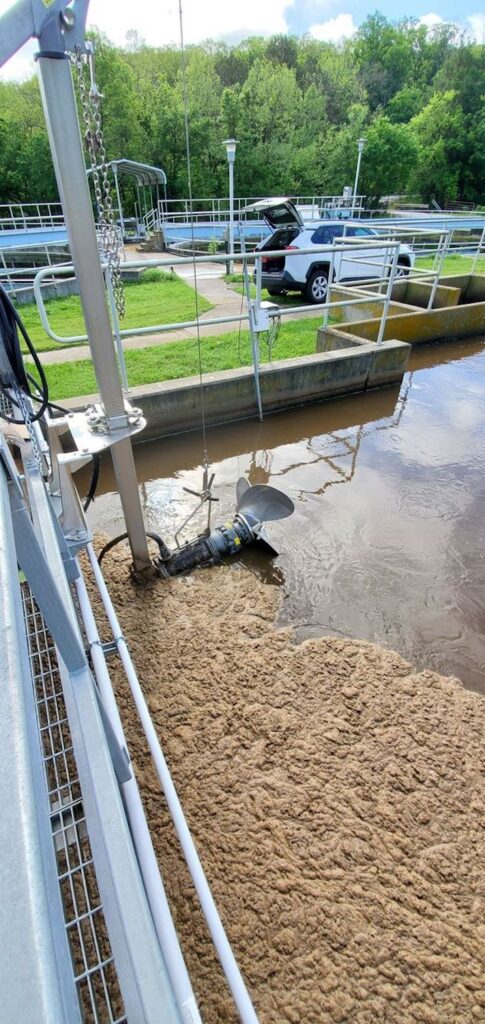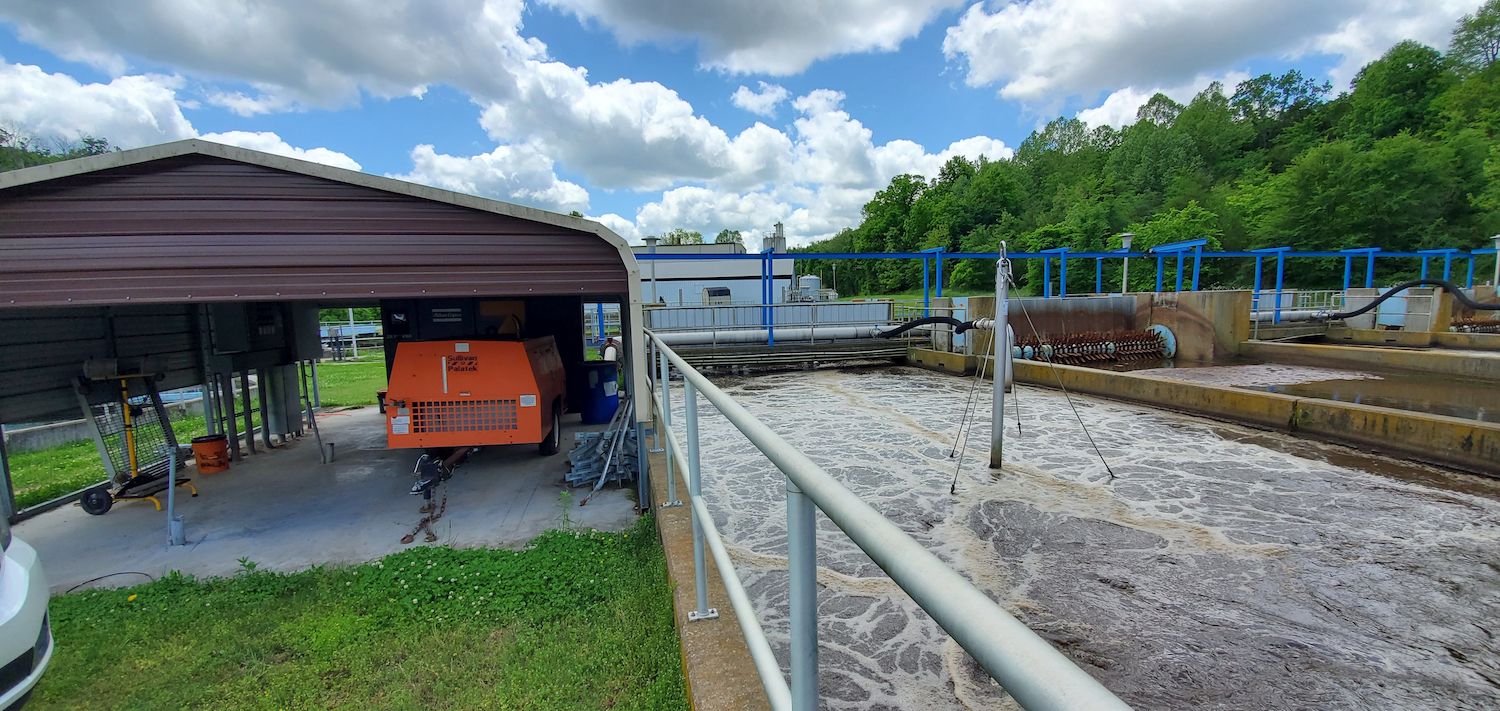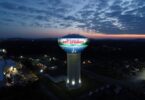Addressing the fast-rising cost of energy is rightly high on today’s agenda, so when four hefty 40HP rotors serving one’s aeration plant are also sitting at the top of your maintenance budget, finding a better means of mixing certainly concentrates the mind.

In Huntsville, Arkansas, the route to achieving optimum mixing of its oxidation ditches has been a marathon, not a sprint; but this meticulously operated wastewater treatment plant is now reaping the rewards of significantly reduced horsepower and reduced repair costs.
Managing oxygen levels at Huntsville has been a major, fluctuating challenge, especially with the wastewater taken in from a large-scale food manufacturer, nearby.
The 160HP (total) rotors had to run 24/7 in order to sufficiently mix and add oxygen to Huntsville’s WWTP aeration basin, but when the expanding food manufacturer upgraded its own treatment plant, the problematical rotors were creating far too much oxygen; contaminating the anaerobic and anoxic zones.
“We had to find a new, sub-surface means of mixing our oxidation ditch”, commented Bill Eoff, Wastewater Manager at Huntsville.

“And as we only have the one oxidation ditch”, he said, “this presented the extra challenge of finding mixers that could be installed without there being any interruption to our process”.
Bill and his Water Department Director, Sean Davis, had tried pulsing the rotors on timers, and had also been having to feed in chemicals at additional expense to balance out the process, so that the ratio of BOD to ammonia could be harmonized, but to no avail. So, they consulted with their local equipment representative, Instrument & Supply, who have been working with Huntsville for over 20 years.
“We believed that by far the best solution for the plant was to separate the aeration and mixing functions; and that included mixers made by Landia. This provided a subtle, but highly effective solution”, said Chris Enloe from Instrument & Supply.
“We were very confident of our recommendation; plus, the fact that no other mixer manufacturer could, or was prepared to install their mixers without draining down the tank, which was not an option at Huntsville”.
‘Sledgehammer!’
At first, to some, the installation of a mixer to a full and operating ditch might sound rudimentary, especially with what includes about twenty solid blows with a sledgehammer (!), but in keeping with Landia’s long-established designs, no-nonsense simplicity often proves best. Actually, there’s real precision in ensuring that the (pre-marked) guide spike is installed plumb; approximately half an inch into the base, with the mixer on the guide pipe set at nine inches above the base of what is typically an eight- or nine-feet deep ditch. Installation takes just two to two and half hours.
Chris Enloe added: “The team at the plant had to work without the benefit of grants or loans that come with a new design. Everything was funded piece by piece on cash reserves. This made the task all the more trying; for example, keeping the rotors until such times that a second blower could be purchased, in order to meet the state’s requirement for redundancy to be in place”.
‘Big win for the City’
Sean Davis, Huntsville’s Public Works Director, continued:
“The rotors were proving costly and time-consuming to maintain, especially the gearboxes, but although the changes we needed to make to meet our treatment needs took longer than we would have liked, it has already resulted in a 15% reduction in our energy costs alone. This is a big win for the city. In total, the 160HP of course used up a huge amount of resource. The blower is 100HP, but is only needed 25 per cent of the time – and the mixers at just nine HP each (36HP in total) are in comparison, extremely efficient and very effective indeed”.

Bill Eoff added: “Running 24/7, for over five years with no major issues, the Landia mixers have been a great investment. We pull them up every six months to change the oil and grease them – and that’s basically all the maintenance they need. We’re very happy with them. We know that there will inevitably we some wear and tear with shims and seals that over time need to be replaced, but overall, they are very easy to maintain. In five years, we’ve spent less than $3,000 on spares. This is a world of difference compared to the rotors, which no longer provide value. As well as the help we’ve had from Instrument & Supply, Landia have been very supportive throughout, from start-up to supervising our first service – and much more with additional advice and training. They were and still are determined to help us succeed”.
‘Supports the greater Community’
Chris Enloe concluded: “Huntsville did not have the option to build a new plant, but with real determination they now have the tools to effectively operate the plant within permit – without breaking the bank. This supports the greater community by working together with its neighbors, including the food manufacturer, which is very important to the local economy. The result demonstrates just how good the Landia solution fits within the many constraints that are in Huntsville. Rightly so, the team at the wastewater treatment plant are very proud of their work”.
Get in touch to submit an article to H2O Global News.







